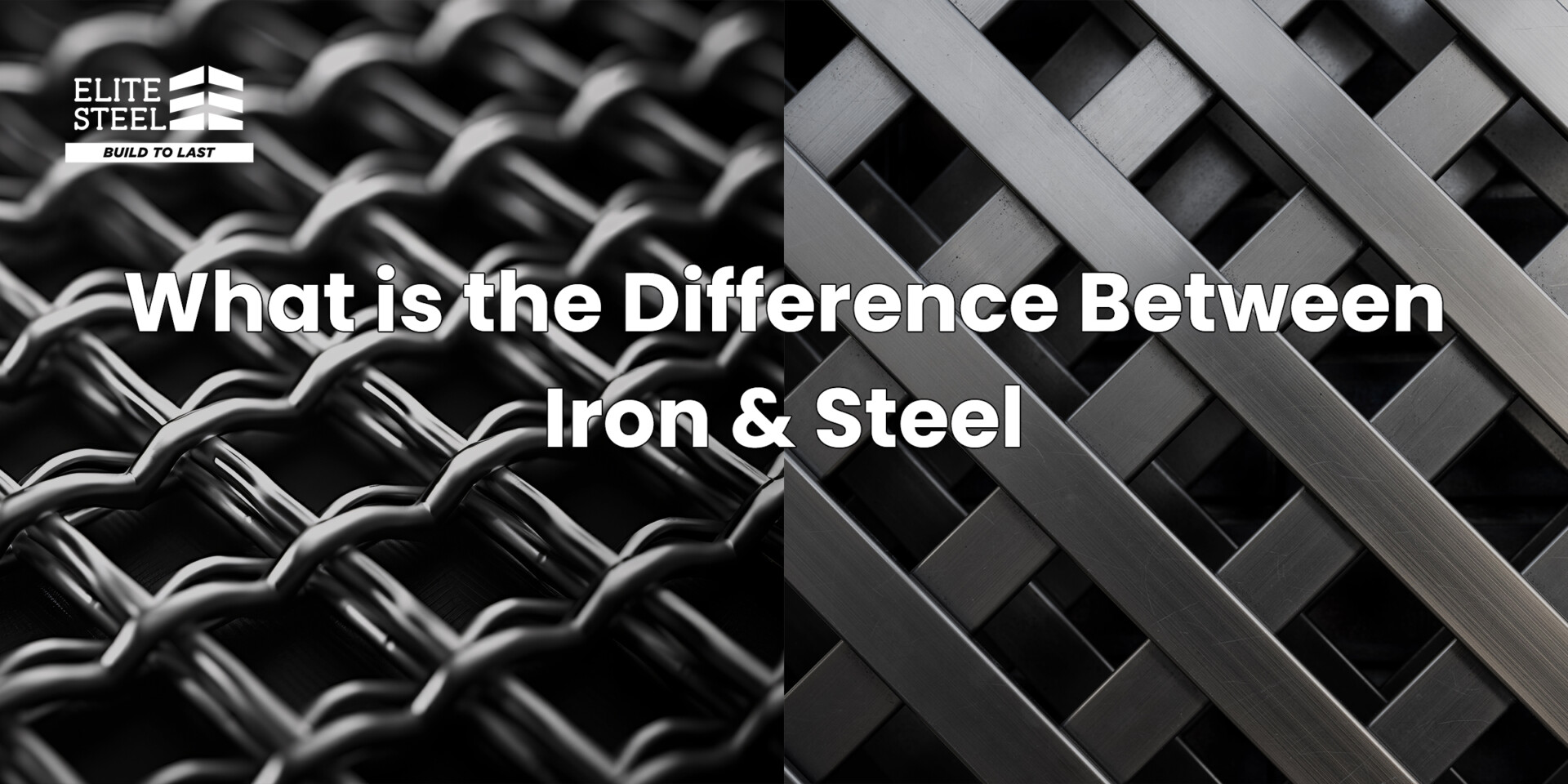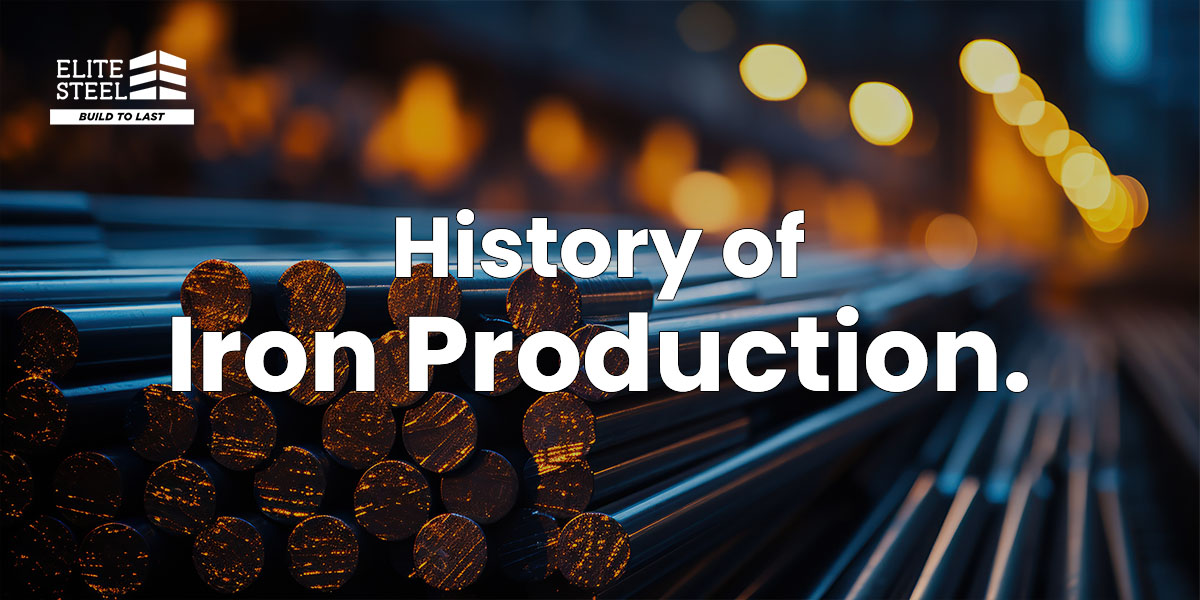What is the Difference Between Iron and Steel
Iron and steel are two of the most fundamental metals, forming the backbone of countless structures and tools around us. But are they really the same thing? You might be surprised to learn that despite their similar appearance and uses, there’s a key distinction between iron and steel.
In this blog post, we’ll delve into the world of metals, exploring the surprising difference between iron and steel. We’ll uncover what makes them unique, how their properties differ, and why steel reigns supreme in most modern applications. So, if you’ve ever wondered what separates these two titans of industry, keep reading to unlock the secrets of iron and steel!
What is Iron?
Iron can refer to two main things:
- The element: Iron (Fe) is a metal essential for our planet and ourselves. It’s the most common element on Earth by mass, forming much of the Earth’s core. Iron is strong, magnetic, and crucial for many industries like construction and manufacturing.
- The mineral: Iron is also a mineral our bodies need. It’s vital for producing hemoglobin, the protein in red blood cells that carries oxygen throughout your body. Iron deficiency can lead to fatigue and anemia. We get iron from various foods like meat, fish, beans, and leafy green vegetables.
Types Of Iron
Iron is a very common element, but it’s not usually found in its pure form. Instead, we use iron to create various iron alloys with different properties. Here are some key types –
- Cast Iron: This is strong and brittle due to its high carbon content. It’s great for heat retention, making it popular for skillets and cookware. There are further types of cast iron like gray iron (flaky graphite), ductile iron (stronger and more shock resistant), and malleable iron (more ductile after additional heating).
- Wrought Iron: This is known for its malleability (ability to be shaped) due to its low carbon content. Historically used for fences, railings, and decorative elements, it’s less common today.
- Pig Iron: This is the raw iron produced from smelting iron ore. It has a high carbon content and isn’t used in its final form but rather refined into other types of iron.
These are just a few examples, and there are other variations depending on the iron’s composition and processing. Unique strengths and weaknesses make each type ideal for certain tasks.
Read Our Latest Blog –
The Difference Between Steel vs Aluminum
History Of Iron Production
Iron’s story starts with the sky. Before 3000 BC, people prized rare meteoric iron, literally fallen stars. But around 2000 BC, the Middle East mastered smelting iron ore, forever changing history. Early furnaces were hot enough to create spongy iron “blooms,” which were hammered into tools. This Iron Age iron, though soft, ushered in a new era.
Centuries later, blast furnaces produced molten cast iron, but it was brittle. By the Middle Ages, Europeans discovered how to refine cast iron into wrought iron, strong and workable. Finally, the 19th century saw breakthroughs like the Bessemer converter, allowing mass production of steel, the king of modern materials. From meteorites to megacities, iron’s journey has been one of human innovation.
Check Our Latest Articles –
Top 15 Best Steel Company in Bangladesh
Steel Composition, Defination & Types
Best Rod Price in Bangladesh 2024 [Update]
What is Steel?
Steel is a super strong and versatile metal alloy, meaning it’s a mix of metals. The main ingredients are iron and carbon, with carbon making up less than 2%. This combo makes steel much stronger and more durable than iron on its own.
But steel isn’t a one-size-fits-all material. Scientists can add other elements like chromium or nickel to create different steel grades, each with special properties. For instance, some steel is super resistant to rust, while others are incredibly tough.
This amazing material is the world’s most important building block for construction and engineering. It’s in everything from skyscrapers and cars to appliances and surgical tools. And the best part? Steel is Reused, recycled, remade – endlessly valuable.
History Of Steel Production
Steel’s story stretches back thousands of years. Early forms emerged around 2000 BC, predating the Iron Age. Back then, iron was smelted in small furnaces, resulting in a spongy material called wrought iron. This wasn’t quite steel yet, lacking the crucial element: carbon.
Around 400 BC, Indian metalworkers developed a technique for incorporating the perfect amount of carbon, creating the first true steel. For centuries, steel production remained a slow, localized process. Then came the 1850s and a revolution. Henry Bessemer’s innovative process used air to remove impurities from molten iron, allowing for mass production of steel. This, along with the open-hearth furnace, transformed steelmaking into a heavy industry, paving the way for our modern world of skyscrapers, bridges, and countless other steel creations.
Iron vs. Steel Properties: A Quick Rundown
Iron and steel may seem alike, but key differences set them apart. Here’s a glimpse:
- Composition: Iron is a naturally occurring element. Steel, however, is an alloy – a metal mixture. The key ingredient in steel is iron, but with added carbon (around 2.14%) for enhanced properties.
- Strength: Steel reigns supreme. The addition of carbon makes steel significantly stronger and tougher than iron. Iron is quite brittle.
- Corrosion: Both succumb to rust, but iron is more vulnerable. Steel can be more corrosion-resistant, especially certain types like stainless steel.
- Workability: Iron is easier to work with due to its lower melting point and better flow during casting. Steel requires more intense processes.
- Applications: Steel’s strength and versatility make it the go-to choice for construction, tools, vehicles, and more. Wrought iron, a type of iron, finds use in decorative elements due to its malleability.
In essence, steel offers superior strength, durability, and wider applications compared to iron. However, iron’s workability and lower cost can be advantageous in specific situations.
Iron & Steel Capabilities
Iron and steel are the backbone of modern industry, offering a unique combination of strength, durability, and versatility. Here’s a glimpse into their capabilities:
- Strength: Steel, particularly when alloyed with other elements, boasts superior strength compared to pure iron. This makes it ideal for applications demanding high load-bearing capacity, like buildings, bridges, and vehicles.
- Durability: Both iron and steel are inherently durable, but steel excels in resisting corrosion. Weatherproof structures, appliances, and tools rely heavily on steel’s ability to withstand harsh environments.
- Versatility: Steel shines in its adaptability. It can be shaped, rolled, forged, and welded into countless forms, enabling intricate designs and complex structures. From delicate wires to massive beams, steel caters to diverse needs.
- Sustainability: The iron and steel industry is constantly innovating to reduce waste and improve resource efficiency. Additionally, steel is highly recyclable, making it an eco-friendly material choice.
In essence, iron and steel offer a powerful combination of properties that empower countless industries to build, create, and innovate.







